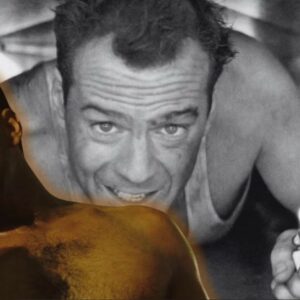Introduction: In the ever-evolving world of music, few artists have left as deep and lasting a legacy as Aretha Franklin. Revered as the Queen of Soul, Franklin’s reach extended far beyond the bounds of any single genre. Her voice, known for its raw power and emotional depth, left an indelible imprint on soul, gospel, and, significantly, jazz. Though celebrated primarily for her contributions to soul music, Franklin’s work in the 1970s revealed her growing engagement with jazz. This exploration highlighted her versatility as an artist and solidified her role as a trailblazer. In this article, we delve into how Aretha Franklin redefined 1970s jazz with her unique influence, focusing on her crossover into the genre, and her lasting impact on both jazz and soul.
Section 1: The Evolution of Aretha Franklin’s Sound
Aretha Franklin’s journey as an artist began in the heart of gospel music, where she honed her vocal skills and developed the emotive style that would define her career. Raised in a musical family—her father was the renowned preacher and gospel singer C.L. Franklin—Aretha’s exposure to spiritual music from an early age shaped her approach to singing. She imbued each note with a depth of emotion that was as much spiritual as it was artistic.
Franklin’s early recordings with Columbia Records (1960-1966) showed her inclination towards jazz, with albums that featured jazz standards such as “Skylark” and “Unforgettable.” These recordings showcased her vocal versatility and ability to interpret complex compositions, blending jazz sensibilities with her gospel roots. However, it was during her Atlantic Records years in the late 60s and 70s that she began to truly redefine her sound.
As Franklin’s career blossomed in the 1970s, she delved deeper into the jazz influences that had always been a part of her musical foundation. Her records began to feature arrangements that incorporated more complex harmonies, improvisational passages, and bluesy undertones that drew directly from jazz traditions. For example, her 1972 album Young, Gifted and Black exhibited a bolder approach to genre-blending, where soul, jazz, and gospel intersected seamlessly. Franklin’s ability to integrate these elements marked her sound as uniquely dynamic and profoundly influential.
Section 2: Aretha’s Jazz Influence on the 70s
The 1970s were a revolutionary period for jazz. The genre was in a state of flux, with artists like Herbie Hancock, Miles Davis, and Weather Report experimenting with fusion, combining jazz with elements of rock, funk, and soul. This period of innovation and boundary-pushing reflected a broader cultural shift towards experimentation and genre-mixing, and Aretha Franklin’s music found itself at the forefront of this movement.
Franklin’s vocal approach was deeply resonant with jazz musicians, particularly in how she approached improvisation. Songs like “Day Dreaming” and “Spirit in the Dark” were prime examples of her blending soulful expression with jazz elements. “Day Dreaming,” released in 1972, was a masterclass in vocal jazz improvisation—Franklin’s voice glided over the melody with fluidity and precision, embodying the very essence of jazz improvisation. Meanwhile, “Spirit in the Dark” highlighted her gospel roots while also venturing into jazz-inspired phrasing, creating a soulful, spiritual, and improvisational feel that mirrored the direction of contemporary jazz.
Jazz musicians of the 1970s were particularly inspired by Franklin’s ability to convey raw emotion through her music. Her soulful interpretation of melodies and lyrics, paired with her improvisational prowess, resonated with artists like George Benson and Al Jarreau, who sought to emulate her ability to cross between genres without losing authenticity. Her music wasn’t just influencing vocalists, either—instrumentalists found inspiration in her phrasing and emotive delivery, which provided a template for blending soul and jazz.
Section 3: Crossover Moments: Jazz Collaborations and Performances
Aretha Franklin’s crossover into jazz became increasingly visible during the 1970s through her performances and collaborations with prominent jazz artists. One of the most significant moments in Franklin’s jazz journey was her performance at the 1971 Montreux Jazz Festival. This event, known for showcasing some of the most innovative jazz talents, saw Franklin delivering a performance that skillfully infused her soul roots with jazz improvisation, captivating the audience. Her rendition of classics with a jazz-infused twist demonstrated her ability to bridge the gap between soul and jazz seamlessly.
Collaborations with jazz musicians also marked a crucial phase in Franklin’s influence on the genre. One of the most notable of these was her work with saxophonist King Curtis. Curtis, a jazz and R&B saxophonist, frequently collaborated with Franklin in the studio and on stage, adding his smooth, jazzy touch to her soul-driven performances. Their collaboration on the 1971 live album Aretha Live at Fillmore West is particularly noteworthy. Curtis’ saxophone solo on the track “Spirit in the Dark” exemplified how Franklin’s soulful delivery could blend effortlessly with jazz instrumentation, creating a rich, genre-defying sound.
Another notable collaboration was Franklin’s work with Quincy Jones, who produced her 1973 album Hey Now Hey (The Other Side of the Sky). Jones, a jazz legend, helped to craft an album that incorporated jazz harmonies and arrangements into Franklin’s signature soul sound. The result was a bold fusion of genres that highlighted Franklin’s ability to navigate the complexities of jazz while staying true to her soulful roots. Songs like “Somewhere” and “So Swell When You’re Well” were emblematic of this jazz-soul hybrid, showcasing Franklin’s vocal range and emotional depth within a jazz context.
Section 4: Jazz Artists Inspired by Aretha
While Aretha Franklin’s influence on jazz during the 1970s was clear through her direct collaborations, her impact also extended to the broader jazz community. Many jazz artists of the era were deeply inspired by Franklin’s vocal style and musical approach, incorporating elements of her soul-driven delivery into their own work. Vocalists like Dee Dee Bridgewater, Al Jarreau, and George Benson all cited Franklin as a significant influence on their music.
Dee Dee Bridgewater, one of the most respected jazz vocalists of the 1970s, often spoke of Franklin’s impact on her singing style. Bridgewater admired Franklin’s ability to fuse gospel’s emotional intensity with jazz’s sophistication, and she sought to incorporate that same balance in her own performances. Franklin’s fearless approach to blending genres gave Bridgewater the freedom to explore a more soulful side of jazz.
Similarly, Al Jarreau, known for his innovative jazz vocals, found inspiration in Franklin’s improvisational style. Jarreau’s ability to navigate complex jazz rhythms while maintaining a soulful, expressive delivery owed much to Franklin’s influence. He often cited Franklin’s ability to infuse every note with meaning and emotion as a guiding principle in his own performances.
Instrumentalists, too, were inspired by Franklin’s unique sound. George Benson, a jazz guitarist and vocalist, found inspiration in Franklin’s phrasing and ability to make every note count. Benson’s 1976 hit “This Masquerade,” which combined jazz with soul, reflected Franklin’s influence on his approach to genre fusion. Franklin’s music encouraged musicians like Benson to take risks and push the boundaries of what jazz could be, blending it with other genres in innovative ways.
Section 5: The Legacy of Aretha Franklin in Jazz
Aretha Franklin will always be celebrated as the Queen of Soul, but her contributions to jazz are an essential part of her legacy. Her ability to transcend genre boundaries left an indelible mark on the jazz world of the 1970s. Franklin’s boldness in infusing jazz with soulful elements not only enriched her own music but also inspired a generation of jazz musicians to explore new sonic possibilities. Her work during this era represented a key moment in the evolution of jazz, as the genre continued to expand and embrace new influences.
Franklin’s influence on jazz can also be seen in the way her music has been covered and reinterpreted by jazz artists over the decades. Her songs have become standards in the jazz repertoire, with artists continually returning to her work for inspiration. Jazz musicians continue to draw from Franklin’s emotional depth, improvisational skill, and genre-blending approach, ensuring that her legacy in jazz remains vibrant and relevant.
Moreover, Franklin’s impact on jazz goes beyond her music—it lies in the spirit of her artistry. She represented a fearless approach to music-making, one that refused to be confined by labels or genres. In doing so, she paved the way for future generations of artists to explore new creative paths and redefine the boundaries of jazz and soul.
Conclusion: Aretha Franklin’s influence on 1970s jazz stands as a testament to her versatility and boldness as an artist. By crossing over into the genre, she expanded the possibilities of both jazz and soul, creating a fusion that resonated with musicians and audiences alike. Her legacy in jazz, though often overshadowed by her achievements in soul, remains a powerful reminder of her ability to shape the music world across multiple genres. Franklin’s music continues to inspire artists today, proving that the Queen of Soul’s reign extended far beyond the borders of soul music alone





